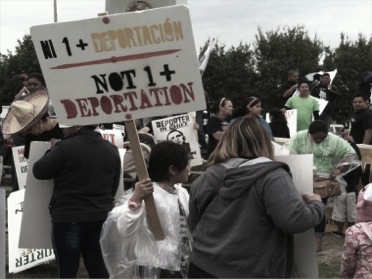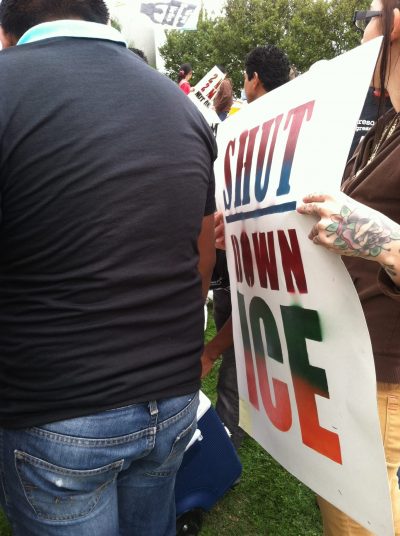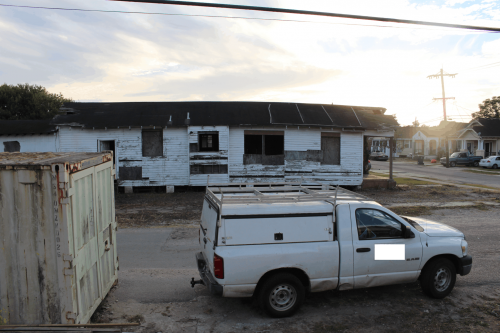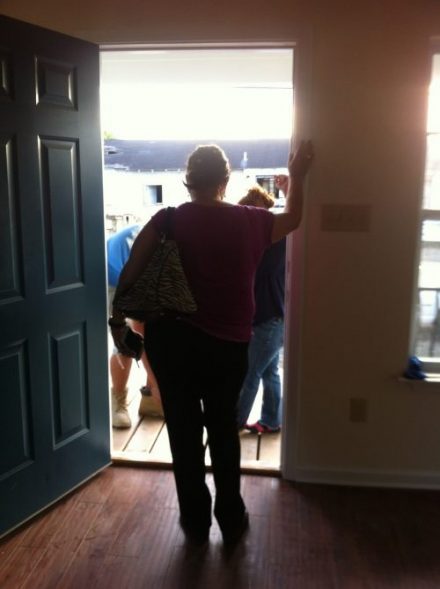In late September, 2019, the current US presidential administration struck several unprecedented deals with the Northern Triangle governments of Honduras, Guatemala, and El Salvador to return asylum seekers who transited through those countries on their way to the U.S. At the same time, the drug trafficking trial of Juan Antonio Hernández, brother of Honduran president, Juan Orlando Hernández, in New York has revealed how drug traffickers attempted to funnel money to US ally Hernández’s election campaign in exchange for protection for their trade. Amidst these larger, internationally linked political forces, desperate asylum seekers from Central America inside an El Paso, Texas immigration courtroom plead not to be sent back to Mexico. The illicit economies of drugs, arms, and human smuggling cross borders in the region stretching from Honduras to the U.S. and reproduce the dangerous conditions that individuals find themselves trapped under. Migrants make their way northward within what is a transnational continuum of insecurity, with the most vulnerable – women and children – suffering the most. And it’s only getting worse.
For several years now, immigration-related headlines from US newspapers have painted an increasingly grim picture of the (mostly) Central Americans seeking asylum in the United States. Harrowing photos and first-person accounts also characterize other immigration-related catastrophes: such individuals currently being held in detention centers, ICE[1] raids throughout the country that have accelerated over the past year, the family separation policy, and the ongoing “loss” of unaccompanied migrant minors by the US government. These developments highlight a worsening humanitarian crisis that, according to Amnesty International, has “manifestly violated both US and international law, and appeared to be aimed at the full dismantling of the US asylum system.”

Yet, as conditions at the border deteriorate for individuals fleeing violence, economic deprivation, a worsening climate, and political corruption often exacerbated by US intervention in their home countries in Central America, relief-seeking migrants continue to trek northward over the well-trodden paths of earlier individuals who similarly faced an increasingly securitized and deadly border and further vulnerability within the US. Past policy choices have arguably contributed to the speed and ease with which the current presidential administration has implemented cruel and draconian immigration policies. Yet, as the following story illustrates how the possibilities for refuge are growing ever smaller, with women in particular suffering the effects.
“I arrived May 5, 2006.” [“Llegué a 5 de mayo 2006.”] Similar to many of the Central American migrants I interviewed while conducting anthropological fieldwork in New Orleans in 2013-2014, Larissa[2] remembered the precise date of her entry to the United States. She was fleeing Honduras and, like many fellow woman migrants from the region, was escaping domestic abuse and fears for her safety in urban Tegucigalpa. According to the United Nations, 22 percent of Honduran women experience “physical and/or sexual intimate partner violence” once in their lives. As Larissa told me once, in Spanish: “No, in my country they kill you. And they don’t pay for it there.” Her voice cracked as she described leaving her then-nine-year old son Christopher with her mother and sister when she left Honduras in 2006. The story of Larissa echoes the accounts of other migrants I spoke with who also came from Central America to the U.S.: an arduous journey, the guidance of a coyote, hiding from La Migra, or Border Patrol, and the final crossing of the Rio Grande. Not knowing how to swim, Larissa relied on a fellow female migrant to help her wade through and then cross the river.

Larissa’s account highlights how dangerous conditions do not end upon setting out from Honduras. Instead, conditions of insecurity begin at home, continue throughout the journey, and follow into eventual settlement in the U.S., often as an undocumented migrant. Compared to others, Larissa was relatively fortunate in how a traumatic experience allowed her to undergo a path to legalization. She gained residency in the U.S. in the late 2010s and was able to bring her son Christopher to join her in 2009 through the U-Visa, a nonimmigrant status created under the Victims of Trafficking and Violence Protection Act and the Battered Immigrant Women’s Protection Act. As part of this act, promoted and passed under the Clinton Administration in 2000, migrants are expected to testify and aid the US government in prosecuting crimes—including domestic abuse in the U.S.—and in turn are protected from deportation. Larissa’s journey to legal US resident has been arduous and only possible because of measures meant to protect her as a domestic abuse survivor in the U.S., measures that the current administration is seeking to abolish.
Over the past few decades, the demographics of migrants coming over the US-Mexican border have become more Central American: the percentage of individuals from the Northern Triangle countries of Honduras, Guatemala, and El Salvador crossing the border increased from only two per cent in 2000 to 50 percent in 2014. Along with children, adult women are amongst the most vulnerable of this group. A UNHCR report from 2015 highlights how 60 percent of female Central American migrants reported attacks, rape, and violent threats in their home countries, sometimes from the police themselves. Under policies spearheaded in June 2018, however, the US federal government has declared that domestic abuse and violence stemming from gang activity are no longer legitimate grounds for asylum applications. Similarly, asylum applications from migrants at the U.S.’s southern border have nearly ground to a halt in the past several months. As of December, 2018, rates for successful asylum applications were at the lowest in twenty years. While an August 2, 2019 federal court ruling struck down the current administration’s near complete asylum ban on the southern border, the struggle over immigration policy continues unabated.

Much of the groundwork laid for current immigration policies began with the George W. Bush administration’s post-9/11 expansion of the US deportation regime. Until the 1990s, deportations from the U.S. had held steady at no more than 50,000 annually for several decades. After growing anti-immigrant sentiment and 1996 legislation, that number rose to 200,000 per year in the years preceding 2001. The events of 9/11 in 2001 spurred a further increase in deportations, stricter border controls, the creation of a securitized federal bureaucracy (the Department of Homeland Security), and, eventually, the public mainstreaming of a new normal in cracking down on “illegal immigration.” This despite the fact that the US economy depends heavily on the low-wage labor of undocumented migrants; the U.S. has long demanded yet criminalized its cheap labor pool.
Following upon the hardline policies enacted by Bush, President Obama’s record from 2009 on was mixed. Under his administration, deportations rose to 400,000 in 2009 and decreased to nearly 350,000 deportations in 2016. In offering increased deportations in proposed exchange for partisan support for a large-scale immigration reform process that failed in Congress, immigrant rights advocates assigned Obama the moniker of the Deporter-in-Chief, though in the second half of his presidency deportations decreased and programs like DACA (Deferred Action for Childhood Arrivals) implemented some immigration relief. Today, under the forty-fifth president, deportations stand at slightly more than 200,000 per year, a decline due not so much to a reduced effort at deportation as to fewer individuals crossing the border in the first place. The number of migrants entering the country who were undocumented fell from 32% in 2007 to 20% in 2016. Contrary to public panic over a “surge at the border,” the number of unauthorized migrants living in the US has declined, from 12.2 million in 2007 to 10.7 million in 2016.
And while the U-visa that Larissa used during the period of Obama’s presidency still exists, policies in that realm have changed too: the Justice Department is now waiving the discretionary powers judges had previously exercised to allow petitioners to stay and work legally while their U-Visa applications were under review, making it a much riskier strategy and one that may drive women migrants back to their abusers. Local law enforcement has already noticed a decreased reporting of domestic violence and individuals willing to work with them on prosecutions. Yet, Larissa’s story presents a different dimension to the contemporary Central American migrant presented in many news articles: one of triumph and measured hope. During my fieldwork in New Orleans, I saw how Larissa, along with other Central American migrants, contributed to rebuilding the city after Hurricane Katrina wreaked havoc in 2005 and settled as residents, though often with undocumented status.

author, 2014.
As conditions worsen in Central America, individuals continue to find the risk of migrating worth it. Women have been and continue to be particularly vulnerable all along the northward journey and are at risk of physical and sexual abuse. Studies show that roughly 60-80 percent of women migrants from Central America experience some form of sexual assault on their journeys. There have been thousands of complaints of abuse while in ICE custody, including women who say they were raped or blocked from reproductive services including abortion for minors. “There is a lot of violence in men towards women,” Larissa told me. “And women, we remain silent, sometimes out of fear, or sometimes because we are involved in a system from which we cannot find a way out.”
Larissa counted herself lucky for not encountering abuse along her own journey to the United States. After stopping in Houston for three days to rest and recover from a fever, chronic itching, and foot sores she had acquired during her long migration, she arrived in New Orleans roughly a year after Hurricane Katrina in 2005. By then in her early forties, Larissa quickly found work rebuilding the devastated city. Within two months of arriving in New Orleans, she had learned how to sand and paint. She told me in Spanish how she had worked “from seven in the morning to ten to eleven at night.” She sent everything she could to her family and son in Honduras. “I made the sacrifice … I didn’t care if I was tired or anything.”
Larissa eventually built her own house in New Orleans in 2014-2015, with the help of volunteers and employees of an organization assisting low-income individuals to become homeowners. I was volunteering for them too at that time. Larissa showed me how to carefully paint the corners where the walls meet the ceiling, and shook her head amusedly at my terrible painting skills. My 15 months of fieldwork in New Orleans revealed the role Hondurans like Larissa, along with other Latinx migrants, played in rebuilding and reshaping the post-Katrina city. Since 2005, New Orleans has emerged as a hub of Central American migration. As of 2017, migrants from Central America constituted one-third of the New Orleans metro area’s Latinx community in contrast to nine percent of the broader US Latinx population. Many of these individuals fled conflict and economic deprivation to find work in the rebuilding of New Orleans.
Larissa stayed in the building trades as a painter, working with a Honduran subcontractor on houses throughout the city. Her sacrifices, struggles, and successes bear witness to the possibilities of human survival and achievement that policies such as the U-Visa allow. When I visited Larissa again in 2016, we sat together in her then-finished house, adorned with new appliances and furniture. As we sipped Sprites, she told me she had repainted the entire house herself after she moved in because she was not satisfied with the work of the organization’s volunteers. “Like me?” I asked. She laughed in agreement. She showed me photos of her son Christopher’s high school graduation, and gave me updates on his achievements in college.
As the door to potential safe haven for migrants like Larissa closes ever more tightly in the U.S., de facto refugees will continue to make the dangerous journey northward in their bid to find a way out, regardless of the risks. In just the period November 2018-September 2019 alone, over 250,000 Hondurans crossed the US-Mexico border. And women will continue to face particular dangers within these concentric circles of insecurity. The policy choices of presidential administrations matter profoundly for these migrants. Those policies affect structural conditions in their Central American homelands as well as individual fates along the migratory trek to potential settlement—or detention—in the United States.
[1] ICE refers to Immigration and Customs Enforcement, the federal law enforcement agency tasked with enforcing immigration and customs law and falling under the purview of the Department of Homeland Security.
[2] Larissa’s name and other personal details have been changed to protect her identity and privacy.
Featured Image by Engin_Akyurt (Courtesy of Pixabay)





